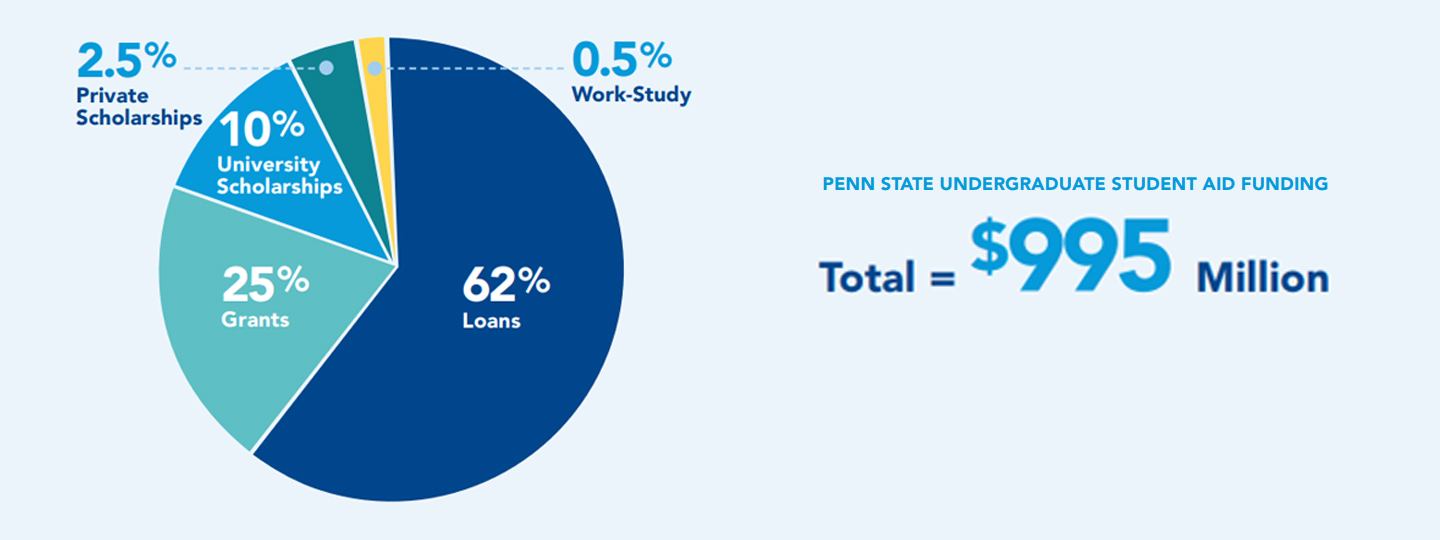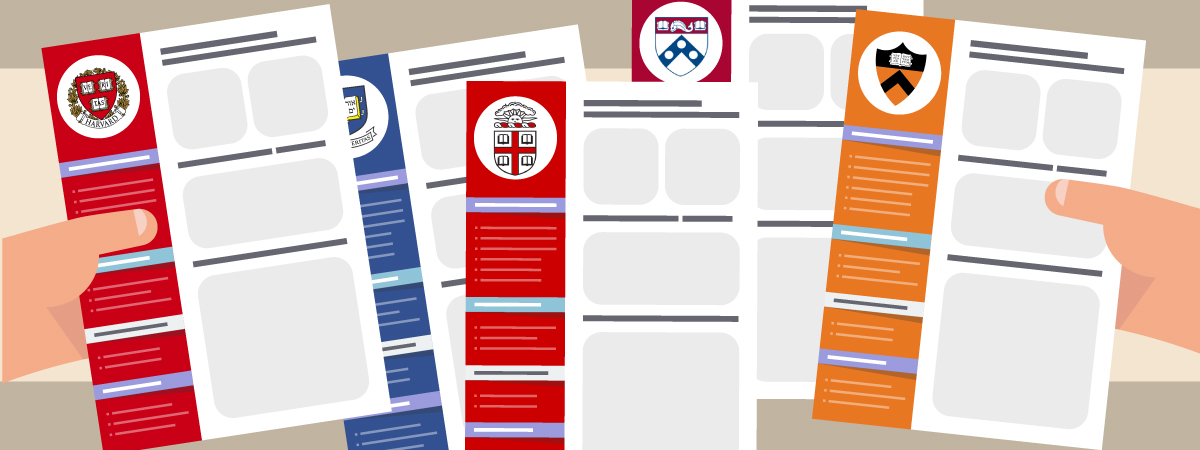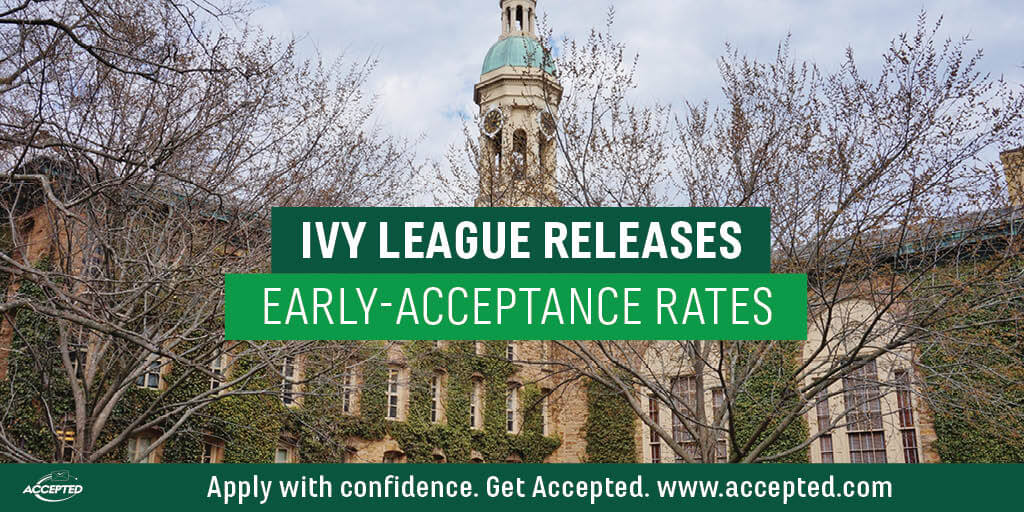Admission StandardsEliteApplicant CompetitionExtremeHow hard is it to get into Penn and can I get accepted? The school has a 8% acceptance rate ranking it #1 in Pennsylvania for lowest rate of acceptance. Last year, 3,740 out of 44,491 applicants were admitted making Penn an extremely competitive school to get into with a very low chance of acceptance – even for applicants with the highest scores and grades. Academically, it has exceptionally high requirements for admission test scores, generally admitting students who score in the top 4 percent. University of Pennsylvania typically accepts and attracts "A-" average high school students.
With over half of admitted students enrolling, acceptance by University of Pennsylvania is a prized outcome for many students. Most incoming freshmen graduated in the top ten percent of their high school class. This is a notable disparity, one we've pointed out before for previous incoming classes of Brown University.
Highly selective colleges — with the obvious exception of, say, all women's colleges — tend to want to admit men and women in equal numbers. So while Brown University's admissions office would never suggest that it helps to be male when applying, logic tells you that it sure does. They still need to be extremely impressive candidates of course…since, after all, Brown is one of America's most selective colleges.
Harvard's Early Action applications for its Class of 2021 were up 5% over last year. In all, 6,473 students applied Early Action to the university — as compared to 6,167 for the Class of 2020. This year, 938 of these young people earned admission, marking an admit rate of 14.5% (or 0.3% lower than last year's EA admit rate of 14.8%). As Harvard's longtime Dean of Admissions and Financial Aid William Fitzsimmons dubs the annually rising Early pool, it's "the new normal." In the Regular Decision round, 1,118 students were also offered admission.
So if you combine the Early Action admits with the Regular Decision admits, you have a Harvard Class of 2021 that is comprised of 2,056 students. Overall, of the nearly 40,000 (wow!) applicants, Harvard College offered admission to 2,056 students. This marked an admit rate of 5.2%, the lowest admission rate among the eight Ivy League schools for the Class of 2021. It also happened to be the admit rate for last year's Harvard class — so things stayed steady.
Brown University leads off our Class of 2021 Ivy League admissions statistics. In the Early Decision round, 695 students were offered admission to the university. So there were a whole lot of historical admissions benchmarks set by Brown for the Class of 2021. And of the students who weren't admitted in the Early Decision round, 60% were deferred to the Regular Decision pool, while 18% were denied outright. And if you're wondering about the admit rate for Brown's PLME program for the Early Decision pool of the Class of 2021, the figure stood at 6.7%.
With Yale opening two new residential colleges in the fall of 2017, the university had announced prior to the admissions cycle that they'd be expanding the size of their incoming class. More students were admitted in the Early Action round for the Class of 2021 at Yale than in any recent year — though not in Yale's history — with 871 students earning slots. These 871 students came from an applicant pool of 5,086 Single Choice Early Action applicants, which was 9% larger than last year's EA pool. As for the rest of the Early Action pool, 53% of applicants were deferred admission to the Regular Decision cycle, while 28% were denied.
Hey, we've got to offer some color commentary…Ivy League admissions statistics would otherwise be a bit dry. Blu graduated from Harvard College in December 2020 with a degree in Social Anthropology and Art, Film, and Visual Studies. His love of learning has led him to explore a wide variety of subjects throughout his life, and he loves sharing this passion with his students. Additionally, Blu has experience with college admissions counseling, in particular guiding students through the essay-writing process. He was accepted to a number of top schools including Harvard, Columbia, Brown, UPenn, Dartmouth, Cornell, Northwestern, and UC Berkeley, and can offer guidance to help you get accepted to the school of your choice. Overall, 32,900 students applied for admission to Yale to be members of the Class of 2021, with a mere 6.9% of students being offered admission — a statistic that includes both the Early Action and Regular Decision pools.
But the overall admit rate wasn't as strong as last year's admit rate for Yale, which stood at 6.27%. So when you hear that admit rates go down each and every admissions cycle, that's generally true but it's not always the case. It wasn't the case for Yale for the Class of 2021 — though the school did have to fill a larger class because of the opening of those two new residential colleges.
And as for the number of students who were placed on the waitlist after Regular Decision at Yale, that figure stood at 1,181. If you're wondering how to get into UPenn, you're most likely interested in how difficult the process is. As mentioned before, although an 8% acceptance rate might seem low, it's relatively high when compared to other Ivy League schools. While it's true that among state colleges, this admissions rate is low, you have to consider it within the context of UPenn's prestige and world-class offerings.
Fortunately, the university's admissions process provides you with plenty of opportunities to stand out from the competition and demonstrate why you deserve to attend this school. If you want to know how to get into UPenn, it's helpful to learn more about how admitted students perform on some key academic indicators such as GPA and standardized test scores. Since the UPenn acceptance rate is one of the most selective in the country – when compared to all colleges – it's no surprise that some of the most talented and brightest minds end up getting accepted. Penn's four undergraduate schools include a college of arts and sciences, a business school, an engineering school, and a school of nursing.
No matter which school or major students are enrolled in, Penn emphasizes that all undergraduate students receive a thorough foundation in the liberal arts. Many students take courses across all four undergraduate schools and choose from countless interdisciplinary minors and dual degrees. In 2019, UPenn's acceptance rate was 7.7% and in 2020, it was 8.07 percent, consistently making it one of the most competitive schools in the country.
Of those admitted, 15% identify as first-generation, 54% are women, and 56% are U.S, citizens or permanent residents who identify as a person of color. My name is Matthew, and I'm a member of Stanford's Class of 2025. When I was applying to colleges, I was told that attending an elite university would be impossible based on my test scores and low GPA. I'm really excited to share my insights with you and to help you achieve your dreams in the admissions process.
Outside of admissions consulting, you can find me involved in debate, advocacy, and community service. All-Ivy League schools have a set of supplemental essays applicants are required to complete in tandem with the standard application. These prompts are designed to give admissions officers a better idea of who you are as an individual, what makes you unique, along other, more personal information about you. While the standard application covers mostly boring admission data such as your GPA and test scores, these supplemental essays are more open-ended in nature.
It's paramount that students pen their responses carefully as they play an important role in determining whether or not you end up attending UPenn. A whopping 56,333 applications were received by Penn for the Class of 2025, the largest applicant pool to date; only 3,202 individuals were accepted. Working out to 5.68% acceptance rate, this was the most selective year in the university's lengthy history. Applicants for the Classes of 2016 and 2017 saw admit rates in excess of 12%; the Class of 2018 is when the school's admit rate first dipped below 10%. The two years prior to the Class of 2025 cycle, 8.07% and 7.4% were accepted. Given its renowned reputation as one of the best medical schools in both the U.S. and the world, Penn Med's admissions process is extremely rigorous.
It's also highly selective, with one of the lowest acceptance rates in the country. Swarthmore College also waived its requirement and 47% of applicants didn't submit scores. The college admitted 1,014 students, or 7.8% of applicants, making this year its most selective. Its admitted students come from six continents, 86 nations, and the 50 states, and 30% are first-generation students, the college said.
My name is Lara, and I'm currently a sophomore at Harvard College studying Molecular and Cellular Biology with a minor in Psychology. Because of this, I am passionate about helping students from under-resourced high schools aim high and succeed in gaining admission to the colleges of their dreams! I am also excited to share my experience of being on a pre-med track at college, pursuing research at the Dana-Farber Cancer Institute, being a STEM major, and engaging in various forms of volunteerism. University of Pennsylvania admissions are extremely selective with a low acceptance rate.
Applicants even with above-average scores have very little chance of getting admitted. Essay and LOR should be emphasized while making the application as a good essay and strong recommendation can set you apart in this tough competition. The admission decision are announced by Mid December for Early Decision applicants and by April 1 for Regular Decision applicants.
For the Class of 2023, 1,279 students were admitted through the early admissions process. Total early applications totaled 7,110, yielding an early acceptance rate of 18%. Early applications increased by 0.5% over last year from 7,074 to 7,110. For the Class of 2021, 1,354 students were admitted through the early admissions process.
Total early applications totaled 6,147, yielding an early acceptance rate of 22%. Early applications increased by 6.7% over last year from 5,762 to 6,147. A university's acceptance rate shows the percentage of students accepted in each session. Therefore, having a knowledge of the acceptance rate and admission requirements of an institution helps you understand how admissions are given and how selective the school is in terms of admission. The most important piece of our review is your academic record, which represents your individual four years of academic development.
We take a hard look at the many roles you serve as a student, sibling, athlete, son or daughter, volunteer, and/or employee. Assembling a class of students with diverse interests and experiences is a task that we take seriously. In Brown's Regular Decision pool, the university admitted students from each of the fifty nifty United States from thirteen original colonies. Indeed 12% of admitted students in Brown's Regular Decision pool hail from outside of the United States. 47% of admitted students self-identified as underrepresented minorities, 62% hail from public high schools as opposed to private high schools, and 14% will be the first in their families to attend college.
95 students earned admission to Brown's PLME program , while 21 students got into the Brown-RISD Dual Degree Program. I used The School's Online application portal to access the online form. Portfolio, recommendation letters, resume, personal statement, research statement, academic transcripts and personalised test scores were required.
The school consistently ranks among the top ten universities in the US offering a world standard, diverse array of academic programs, and a generous array of financial aid packages. Your child can apply to Penn via a binding early decision agreement by November 1st. They'll receive an answer of accepted, deferred to the regular decision pool, or denied by mid-December. Penn admits roughly half of their incoming class through early decision, but the UPenn early decision acceptance rate is still low, around 15 percent.
Penn's yield rate—the percentage of accepted students who elect to enroll, divided by the total number of students who are admitted was 70% in 2019. The takeaway is that an exceptionally high number of those admitted to Penn ultimately choose to attend the university. Part of the explanation for this is that the majority of the class was brought aboard via binding early decision. For comparison, elite schools such as Duke, Northwestern, Notre Dame, and Claremont McKenna all have yield rates under 60%.
In terms of extracurricular activities, it is critically important to have some type of "hook" when applying to Penn. For example, there are over 1,000 NCAA Division I athletes competing for the Quakers. Some of those individuals were recruited by a Penn coach, giving them a serious edge in the admissions process.
Yet, sports are only one of a multitude of areas where one's talents can knock down the doors to any Ivy League institution like the University of Pennsylvania. This year marked Penn's largest application pool in history, with 56,333 — a 34% increase from last year. In December, Penn accepted 1,194 students under the Early Decision Program from a pool of 7,962 applicants — resulting in a record-low 15% ED acceptance rate.
University of Pennsylvania received 44,961 undergraduate applications in 2019, which represents a 1.06% annual growth. Out of those 44,961 applicants, 3,446 students were accepted for enrollment, representing a 7.66% acceptance rate. The University of Pennsylvania admitted 3,202 students — or nearly 5% — of the more than 56,300 applications it received, making it the most selective year in the university's history. The previous record was set two years ago, when the school accepted 7.4% of all applicants. A total of three essays have to be submitted by applicants — one personal essay and two UPenn-focused supplemental essays. That's because the school's admissions officers want to catch a glimpse of what you might be able to contribute to the campus community through your writing.
Out of a record high 1,999 Early Decision applicants to the College on the Hill, 555 students were offered admission as members of the Dartmouth Class of 2021. This marked an Early Decision admit rate of 27.8%, a climb from last year's ED admit rate which stood at 25.6%. The target for the Dartmouth admissions office was to fill about 47% of the incoming class with Early Decision admits.
AdmissionSight is a great resource that offers essay editing services to help make sure what you're submitting will play in your favor when admissions staff make their final decision. As a college admissions specialist, AdmissionSight has helped countless students perfect their college supplemental essays for some of the best universities in the country, including UPenn. If you're applying to more than one university , you'll notice that the vast majority of requirements overlap between all universities. However, you shouldn't take these similarities as an assumption that each school has the same application process. There are some important distinctions between universities that – no matter how small they may appear – can spell disaster for your application. Just because Harvard University requires a certain document or takes a particular activity into account, that doesn't mean the admissions officers at UPenn will do the same.
For the class of 2024, UPenn accepted just over 3,400 students out of a total number of 42,205 applicants. This results in roughly an 8% acceptance rate, which is higher than in previous years. In fact, it's the first time the UPenn acceptance rate has increased in the past five years. The overall acceptance at UPenn is just 5.68%, which is substantially lower than the 15% acceptance rate for students applying through the school's early decision program. Simply applying early decision at UPenn provides a big boost to your odds of admission. Simply having great grades and superb standardized test scores is not enough to earn admission to a highly selective school such as UPenn, since nearly every applicant is academically qualified.























No comments:
Post a Comment
Note: Only a member of this blog may post a comment.